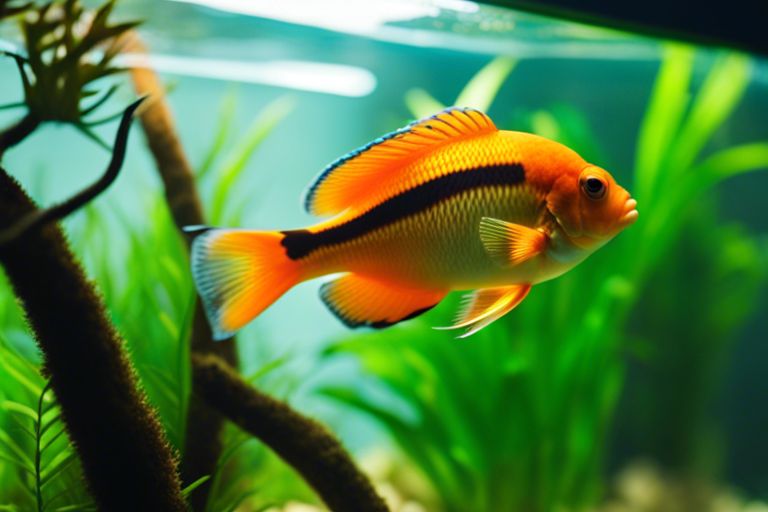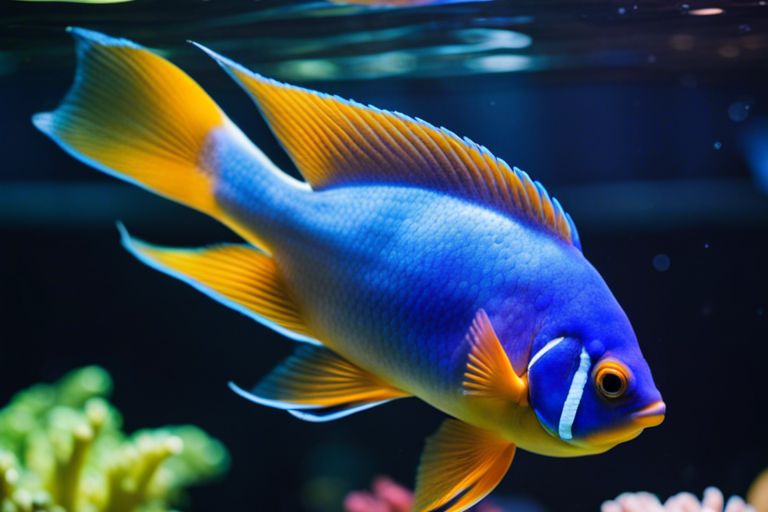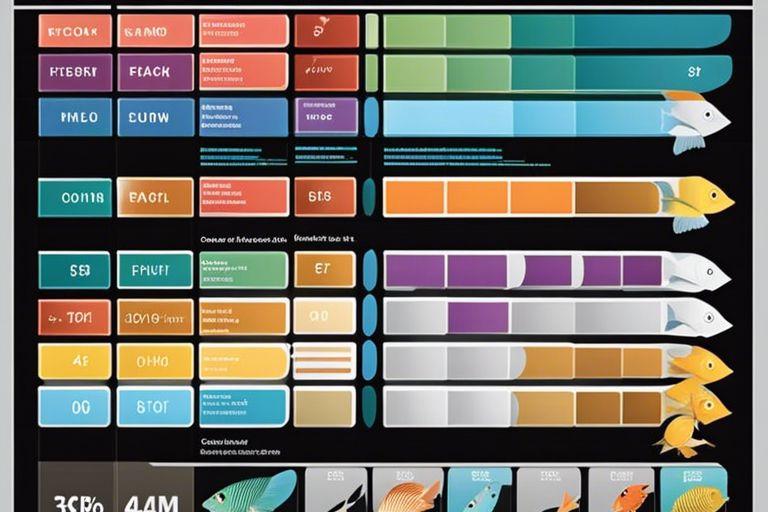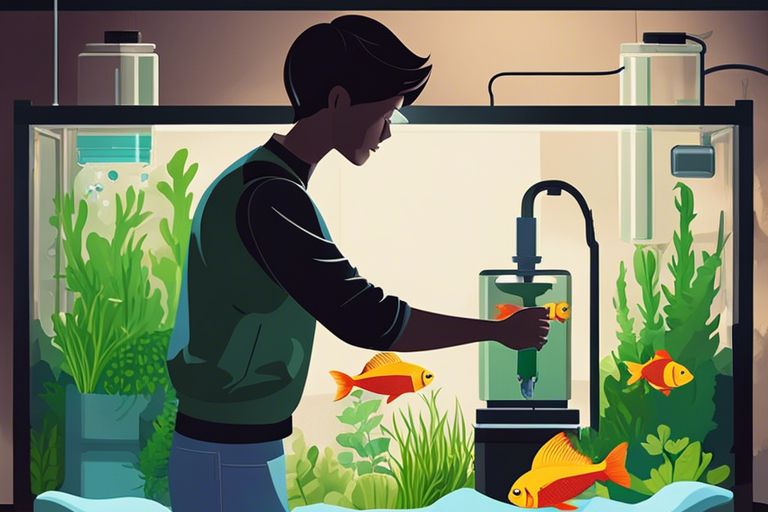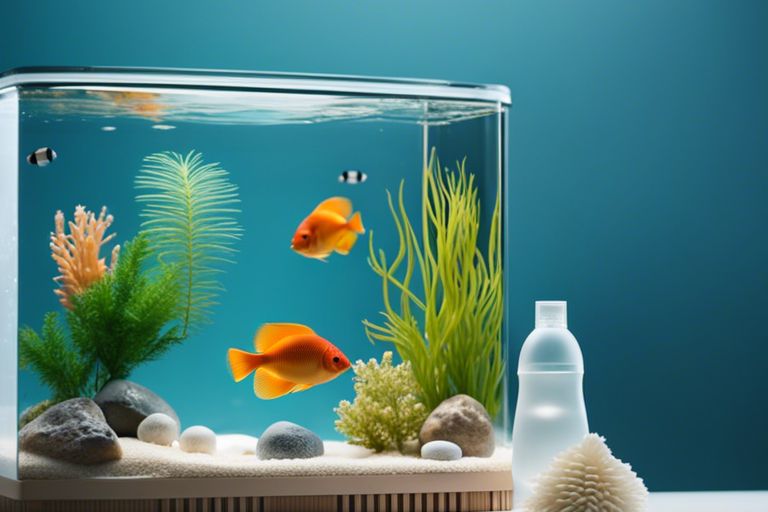Just starting out with a freshwater aquarium? Whether you’re a beginner or looking to improve your aquarium setup, this ultimate guide has got you covered. From choosing the right tank size and equipment to setting up the perfect environment for your fish to thrive, we’ll walk you through all the steps to ensure a healthy and vibrant aquatic ecosystem. Follow these expert tips and tricks to create a beautiful underwater world right in your own home.
Types of Freshwater Aquariums
Your choice of freshwater aquarium setup plays a crucial role in the overall health and well-being of your fish. There are various types of freshwater aquariums to consider, each with its own unique requirements and benefits. Here’s a breakdown of the most common setups:
| 1. Community Tanks | 4. High-Tech Planted Tanks |
| 2. Species-Specific Tanks | 5. Biotope Aquaria |
| 3. Nano Tanks | 6. Brackish Aquariums |
Community Tanks Explained
Some aquarists enjoy the beauty and diversity of community tanks, which house various species of freshwater fish that are compatible with each other. When creating a community tank, it is vital to consider the fish’s temperament, size, and water parameter requirements to ensure harmony within the tank.
Species-Specific Tanks and Biotope Aquaria
If you prefer a more specialized approach, species-specific tanks and biotope aquaria may be the perfect choice for you. These setups focus on housing fish species from the same region or environment, mimicking their natural habitat as closely as possible. If you are interested in creating a biotope aquarium, research is crucial to replicate the specific conditions of the chosen ecosystem accurately.
Biotope aquariums provide a unique opportunity to not only create a visually stunning display but also promote natural behaviors and interactions among fish species. By carefully selecting plants, decorations, and substrate that mirror the fish’s native environment, you can create a slice of nature in your own home.
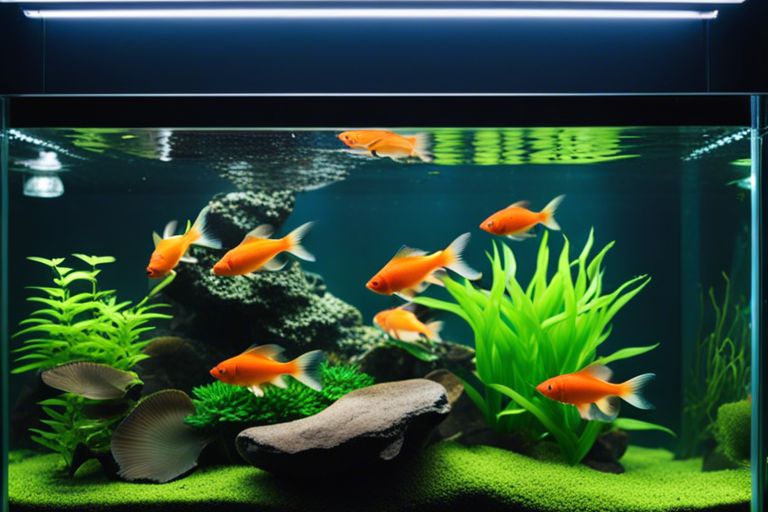
Factors To Consider Before Setup
Some of the key factors to consider before setting up a freshwater aquarium include evaluating space and budget, choosing the right aquarium size and shape, selecting suitable equipment, and deciding on the type of fish and plants that will thrive in your setup. It’s crucial to plan carefully and think about these factors to create a successful and thriving aquatic environment for your fish.
Evaluating Space and Budget
Little consideration should be given to the amount of space you have available for your aquarium and the budget you have set aside for this project. Make sure to choose a location that can support the weight of a filled aquarium and consider the costs of equipment, fish, plants, and maintenance when planning your budget.
Choosing the Right Aquarium Size and Shape
One of the most critical decisions when setting up a freshwater aquarium is choosing the right size and shape. Different fish species require different tank sizes and shapes to thrive. For instance, a long and shallow tank might be suitable for a school of small fish that prefer to swim horizontally, while a tall tank could be ideal for species that like to explore vertical space.
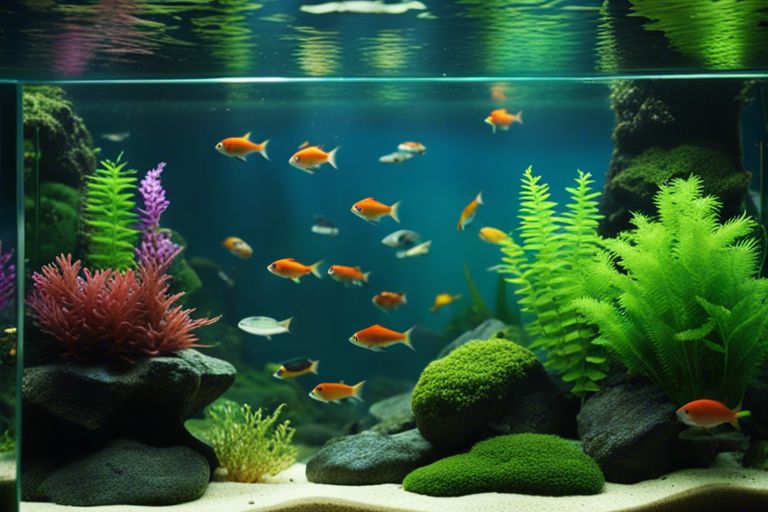
Step-by-Step Guide to Setting Up Your Aquarium
| Step | Action |
| 1 | Choose an appropriate tank size and location. |
| 2 | Gather necessary equipment and accessories. |
| 3 | Add substrate, decorations, and plants. |
| 4 | Fill the tank with water and install the filtration system. |
| 5 | Let the tank cycle before adding fish. |
| 6 | Introduce fish slowly and carefully. |
Essential Equipment and Accessories
StepbyStep When setting up your freshwater aquarium, make sure you have the necessary equipment and accessories ready. This includes a tank heater, filter, lighting, thermometer, water conditioner, substrate, decorations, and fish food. Quality equipment is crucial for maintaining a healthy environment for your fish.
Cycling the Aquarium: Ensuring a Safe Environment for Fish
Aquarium Before adding fish to your newly set up aquarium, it is necessary to cycle the tank. Cycling establishes a healthy environment by establishing beneficial bacteria that break down fish waste. This process can take several weeks but is crucial for the well-being of your aquatic pets.
Cycling the Aquarium: Ensuring a Safe Environment for Fish
Guide To cycle your aquarium, you can use the fishless cycling method by adding ammonia to the tank and monitoring the levels until the beneficial bacteria are established. Alternatively, you can use hardy fish like danios to cycle the tank, but this method can be stressful for the fish. Regular water testing during the cycling process is crucial to ensure ammonia and nitrite levels are safe for fish before adding them to the tank.
Aquarium Maintenance Tips
Now that your freshwater aquarium is set up, it’s vital to maintain it properly to keep your fish healthy and happy. Regular aquarium maintenance is key to ensuring a clean and balanced environment for your aquatic pets.
Routine Cleaning and Water Change Protocols
Cleaning your aquarium regularly is crucial to remove debris, uneaten food, and waste that can accumulate at the bottom of the tank. It is recommended to perform a 10-15% water change every week to maintain water quality and remove harmful pollutants. Use a gravel vacuum to siphon out any waste and clean the substrate without disturbing the beneficial bacteria that have established in the tank.
Managing Algae and Promoting Plant Growth
Even with proper maintenance, algae can still be a common issue in freshwater aquariums. To manage algae growth, ensure your tank is not receiving too much direct sunlight, as this can promote algae growth. Introducing live plants can also help to outcompete algae for nutrients and oxygen, resulting in a healthier tank environment.
Understanding the balance between light, nutrients, and carbon dioxide in your aquarium is vital for promoting plant growth and preventing algae outbreaks. By providing the right conditions for your aquatic plants to thrive, you can create a natural ecosystem that minimizes algae growth and keeps your tank looking beautiful.
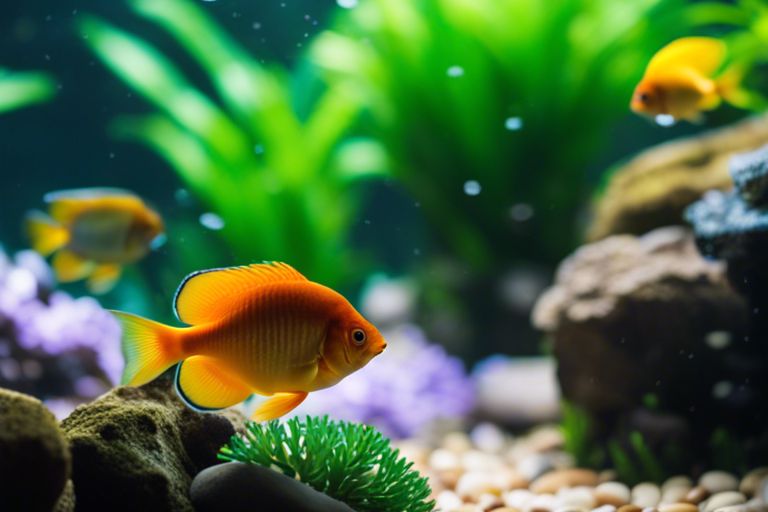
Fish Selection and Care
Pros and Cons of Popular Freshwater Species
| Species | Pros and Cons |
|---|---|
| Betta Fish | Pros: Beautiful colors, low maintenance. Cons: Aggressive towards other fish, may require separate tank. |
| Neon Tetras | Pros: Schooling behavior, peaceful. Cons: Sensitive to water conditions, may require specific diet. |
| Goldfish | Pros: Hardy, come in various types. Cons: Produce a lot of waste, need large tank. |
Feeding: Nutritional Needs and Schedules
The nutritional needs of your freshwater fish are crucial for their health and well-being. It is important to provide a varied diet that includes high-quality flake or pellet food, as well as occasional treats such as frozen or live foods. Feeding schedules vary depending on the species, but generally, smaller fish should be fed small amounts multiple times a day, while larger fish can be fed once or twice a day.
Troubleshooting Common Aquarium Issues
Identifying and Addressing Water Quality Problems
All successful aquariums begin with maintaining high water quality. Identifying and addressing water quality problems is crucial for the health of your aquatic ecosystem. Common issues include high levels of ammonia, nitrite, or nitrate, which can be harmful to your fish. Regular water testing and water changes are vital to ensure optimal water parameters. If any of these levels are too high, consider increasing the frequency of water changes or adjusting your filtration system.
Dealing with Fish Illness and Behavioral Issues
Issues related to fish illness and behavioral problems can arise in any aquarium. It’s important to observe your fish regularly for any signs of illness or abnormal behavior. Common fish illnesses include fin rot, ich, and swim bladder disorder. Understanding fish behavior and providing a stress-free environment can help prevent behavioral issues. If you notice any signs of illness or abnormal behavior, separate the affected fish and seek advice from a veterinarian specializing in aquatic animals.
Enhancing Your Aquarium Experience
Aquascaping: Design Tips and Techniques
On top of providing a healthy environment for your fish, aquascaping allows you to express your creativity and create a visually appealing aquarium. When designing your aquascape, consider the balance of plants, rocks, and driftwood to create a harmonious ecosystem. Experiment with different layouts, heights, and textures to achieve a natural and aesthetically pleasing look. The key is to create a space that mimics the natural habitats of your fish, providing them with both shelter and stimulation.
- Choose plants and decorations that are suitable for your fish species.
- Use a variety of textures and colors to create depth and interest in your aquarium.
- Remember to leave enough open space for your fish to swim freely.
The overall goal of aquascaping is to create a visually stunning and functional environment for your fish, so let your imagination run wild while keeping their needs in mind.
Community Involvement: Joining Forums and Clubs
An important aspect of maintaining a healthy freshwater aquarium is staying connected with other hobbyists and experts. Joining online forums and local fish clubs can provide you with a wealth of knowledge, support, and inspiration. These platforms are great for seeking advice, sharing experiences, and staying updated on the latest trends and advancements in the hobby. Engaging with fellow aquarium enthusiasts can also help you troubleshoot issues, discover new species, and foster a sense of community.
By actively participating in forums and clubs, you can expand your knowledge, network with like-minded individuals, and contribute to the collective learning and growth of the aquarium community.
Final Words
Upon reflecting on ‘The Ultimate Guide To Setting Up A Healthy Freshwater Aquarium’, it is evident that a successful aquarium requires careful planning, proper equipment, and dedication to maintaining a healthy environment for your fish. By following the tips and steps outlined in this guide, you can create a beautiful and thriving freshwater aquarium for your enjoyment. Recall, consistency in water quality, temperature, and feeding is key to ensuring the well-being of your aquatic pets. With patience and attention to detail, you can create a habitat that not only showcases the beauty of your fish but also provides them with a safe and comfortable home. So, look into the world of freshwater aquariums with confidence, knowing that you have the knowledge and tools to create a flourishing aquatic ecosystem!
FAQ
Q: Why is setting up a healthy freshwater aquarium important?
A: Setting up a healthy freshwater aquarium is important to provide a suitable and thriving environment for your aquatic pets.
Q: What are the important components needed for a freshwater aquarium setup?
A: The important components for a freshwater aquarium setup include a tank, filtration system, heater, substrate, decorations, and lighting.
Q: How do I choose the right location for my freshwater aquarium?
A: Choose a location away from direct sunlight and drafts to avoid temperature fluctuations. Make sure the surface can support the weight of the aquarium.
Q: What is the nitrogen cycle, and why is it important for a healthy aquarium?
A: The nitrogen cycle is the process where beneficial bacteria convert toxic ammonia into nitrites and then nitrates. It is crucial for maintaining water quality and a healthy environment for fish.
Q: How often should I test the water parameters in my freshwater aquarium?
A: Test the water parameters, such as pH, ammonia, nitrites, and nitrates, weekly to ensure they are within the optimal range for your fish and plants.
Q: What is the ideal temperature range for a freshwater aquarium?
A: The ideal temperature range for most freshwater tropical fish is between 75-80°F (24-27°C), but it can vary depending on the species in your aquarium.
Q: How can I maintain a healthy environment in my freshwater aquarium?
A: Regular water changes, proper feeding, monitoring water parameters, and providing a balanced diet for your fish are key factors in maintaining a healthy freshwater aquarium.
